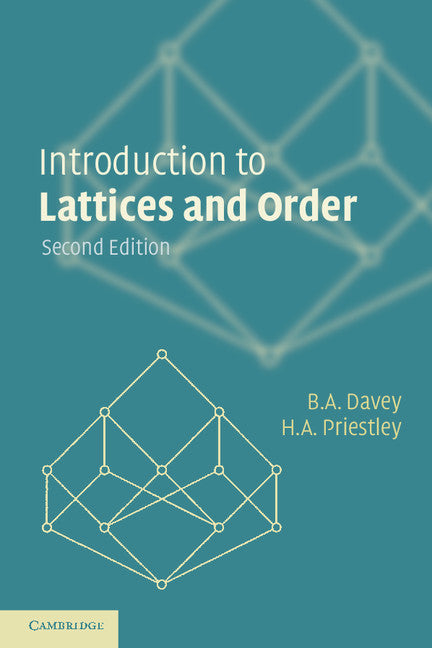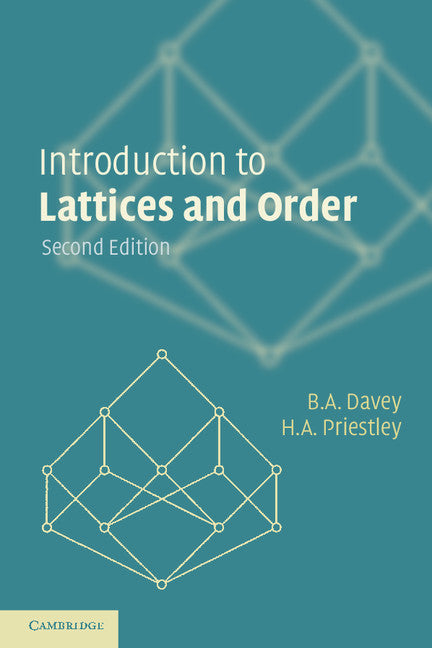Freshly Printed - allow 8 days lead
Couldn't load pickup availability
Introduction to Lattices and Order
The second edition of a successful and unique textbook for students in mathematics or theoretical computer science.
B. A. Davey (Author), H. A. Priestley (Author)
9780521784511, Cambridge University Press
Paperback, published 18 April 2002
312 pages, 36 b/w illus. 75 exercises
22.9 x 15.2 x 1.7 cm, 0.42 kg
'The book is written in a very engaging and fluid style. The understanding of the content is aided tremendously by the very large number of beautiful lattice diagrams … The book provides a wonderful and accessible introduction to lattice theory, of equal interest to both computer scientists and mathematicians.' Jonathan Cohen, SIGACT News
This new edition of Introduction to Lattices and Order presents a radical reorganization and updating, though its primary aim is unchanged. The explosive development of theoretical computer science in recent years has, in particular, influenced the book's evolution: a fresh treatment of fixpoints testifies to this and Galois connections now feature prominently. An early presentation of concept analysis gives both a concrete foundation for the subsequent theory of complete lattices and a glimpse of a methodology for data analysis that is of commercial value in social science. Classroom experience has led to numerous pedagogical improvements and many new exercises have been added. As before, exposure to elementary abstract algebra and the notation of set theory are the only prerequisites, making the book suitable for advanced undergraduates and beginning graduate students. It will also be a valuable resource for anyone who meets ordered structures.
Preface
Preface to the first edition
1. Ordered sets
2. Lattices and complete lattices
3. Formal concept analysis
4. Modular, distributive and Boolean lattices
5. Representation theory: the finite case
6. Congruences
7. Complete lattices and Galois connections
8. CPOs and fixpoint theorems
9. Domains and information systems
10. Maximality principles
11. Representation: the general case
Appendix A. A topological toolkit
Appendix B. Further reading
Notation index
Index.
Subject Areas: Mathematical theory of computation [UYA], Combinatorics & graph theory [PBV]


